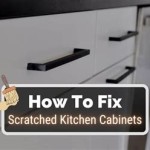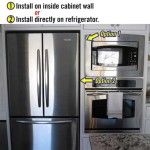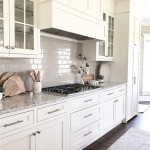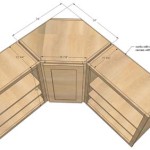Repairing Kitchen Cabinets: An Essential Guide
Kitchen cabinets are one of the most important components of a kitchen, providing both storage and style. However, over time, even the most well-maintained cabinets can suffer from wear and tear, requiring repairs to restore their functionality and appearance.
If you're facing cabinet damage, don't despair. With the right approach and materials, you can repair most kitchen cabinet issues yourself, saving time and money. Here's a comprehensive guide to help you get started:
1. Diagnose the Problem
The first step in repairing kitchen cabinets is to identify the source of the problem. Common issues include:
- Loose or damaged hinges
- Warped or sagging doors
- Scratches or dents on the surface
- Broken or missing handles
- Water damage
2. Gather the Necessary Tools and Materials
Once you know what the problem is, gather the necessary tools and materials for the repair. This may include:
- Screwdriver
- Drill
- Wood filler
- Sandpaper
- Paint or stain
- Replacement hinges or handles
3. Repair Loose Hinges
Loose hinges can cause cabinet doors to sag or fall off. To fix this, simply tighten the screws that hold the hinges in place. If the screws are stripped or broken, you may need to replace the hinges altogether.
4. Fix Warped or Sagging Doors
Warped or sagging doors can be caused by moisture damage or improper installation. To fix this, you can try adjusting the hinges or adding support brackets to the inside of the cabinet. If the damage is severe, you may need to replace the door entirely.
5. Repair Scratches and Dents
Scratches and dents on cabinet surfaces can detract from their appearance. To fix these, you can use wood filler to fill in the damaged area and then sand it smooth. Once the surface is smooth, you can apply paint or stain to match the existing finish.
6. Replace Broken or Missing Handles
Broken or missing handles can make cabinets difficult to open or close. To replace a broken handle, simply unscrew the old one and screw in the new one. If you're adding a new handle to a cabinet that didn't have one before, you'll need to drill a hole for the screw.
7. Address Water Damage
Water damage can cause cabinets to swell, warp, or rot. If you notice any signs of water damage, act quickly to prevent further damage. Dry the affected area as soon as possible and remove any damaged materials. Once the cabinet is dry, you can repair the damage using wood filler and paint or stain.
Conclusion
Repairing kitchen cabinets can be a rewarding task that can save you time and money. By following these simple steps, you can restore your cabinets to their former glory, ensuring that they continue to provide both functionality and style for years to come.

Kitchen Cabinet Repair 101 Woodworking Services Fort Collins

How To Know If You Should Repair Or Replace Kitchen Cabinets Woodworker Express Blogwoodworker Blog

How To Repair Damaged Kitchen Cabinet Doors Handhills Cabinets

9 Ways To Upgrade Repair Reconfigure Your Kitchen Cabinets Feelswarm

Paint My Kitchen Cabinets 2024 Guide For Cabinet Repair And Painting Inner City Skyline General Contractors In Southern

Should I Repair Or Replace Smoke Damaged Kitchen Cabinets

How To Repair Gouges In Kitchen Cabinets Ron Hazelton

Cabinet Repair Installation Services Mr Handymanour

Discover Everything You Need To Know About Cabinet Repair

Paint My Kitchen Cabinets 2024 Guide For Cabinet Repair And Painting Inner City Skyline General Contractors In Southern
Related Posts








